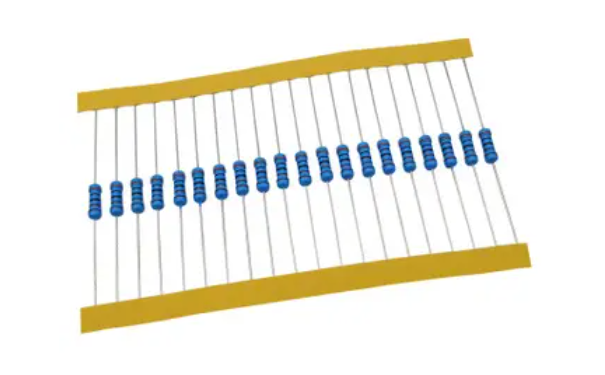Basic knowledge of resistance Let's take a look at various resistance detection methods
Date:2022-11-10 14:59:59 Views:1836
Resistors are generally called resistors in daily life. They are one of the important electronic components and have a great impact on the normal use of circuits in the later period. We must pay attention to the detection of resistors. The resistance value of a resistance element is generally related to temperature, material, length, and cross-sectional area. The physical quantity that measures the resistance affected by temperature is the temperature coefficient, which is defined as the percentage of resistance value change when the temperature increases by 1 ℃. Next, let's take a look at the detection of positive temperature coefficient thermistors, negative temperature coefficient thermistors, varistors and photoresists.

1、 Detection of positive temperature coefficient thermistor (PTC)
When testing, use multimeter R × First gear, which can be operated in two steps:
A. Normal temperature detection (indoor temperature is close to 25 ℃); Measure the actual resistance of two pins of PTC thermistor with two probes, and compare it with the nominal resistance. If the difference is within ± 2 Ω, it is normal. If the difference between the actual resistance value and the nominal resistance value is too large, it means that its performance is poor or damaged.
B. Heating detection; On the basis of normal normal temperature test, the second step of test - heating detection can be carried out. A heat source (such as electric soldering iron) is heated close to the PTC thermistor. At the same time, a multimeter is used to monitor whether its resistance value increases with the increase of temperature. If yes, it indicates that the thermistor is normal. If the resistance value does not change, it indicates that its performance has deteriorated and it cannot be used any more. Be careful not to make the heat source too close to the PTC thermistor or directly contact the thermistor to prevent it from being burned.
2、 Detection of negative temperature coefficient thermistor (NTC)
After seeing the detection of positive temperature coefficient thermistor (PTC), let's take a look at the detection of negative temperature coefficient thermistor (NTC).
(1) The method of measuring the nominal resistance Rt with a multimeter is the same as that of measuring the common fixed resistance, that is, the actual value of Rt can be directly measured by selecting a suitable resistance block according to the nominal resistance value of NTC thermistor. However, since NTC thermistor is very sensitive to temperature, the following points should be noted during the test: A Rt is measured by the manufacturer when the ambient temperature is 25 ℃, so when using a multimeter to measure Rt, it should also be measured when the ambient temperature is close to 25 ℃ to ensure the reliability of the test. B The measured power shall not exceed the specified value to avoid measurement error caused by current thermal effect. C Pay attention to correct operation. During the test, do not hold the thermistor by hand to prevent the human body temperature from affecting the test.
(2) Estimated temperature coefficient α TFirst measure the resistance value Rt1 at room temperature t1, then use the electric soldering iron as the heat source, close to the thermistor Rt, and measure the resistance value RT2. At the same time, use a thermometer to measure the average temperature t2 on the RT surface of the thermistor at this time, and then calculate.
3、 Detection of varistor
R with multimeter × The positive and reverse insulation resistance between the two pins of the varistor measured at 1k gear is infinite, otherwise, it indicates that the leakage current is large. If the measured resistance is very small, it indicates that the varistor is damaged and cannot be used.
4、 Detection of photosensitive resistor
A Use a piece of black paper to cover the light transmission window of the photosensitive resistor. At this time, the pointer of the multimeter basically remains unchanged, and the resistance value is close to infinity. The higher this value is, the better the performance of the photoresist is. If the value is very small or close to zero, it indicates that the photoresist has been burned through and damaged, and can no longer be used.
B Align a light source with the light transmission window of the photosensitive resistor. At this time, the pointer of the multimeter should swing significantly. The more obvious the resistance value is, the better the performance of the photosensitive resistor is. If the value is large or even infinite, it indicates that the open circuit inside the photoresist is damaged and can no longer be used.
C Turn the light transmitting window of the photosensitive resistor to the incoming rays, and use a small black paper to shake the upper part of the light shielding window of the photosensitive resistor to make it receive light intermittently. At this time, the pointer of the multimeter should swing left and right with the movement of the black paper. If the pointer of the multimeter always stops at a certain position and does not swing with the paper, it indicates that the photosensitive material of the photosensitive resistor has been damaged.
The above are the contents related to various resistance testing methods organized by the wound core testing small group, and I hope it will be helpful to you. Chuangxin Testing is a professional testing agency for electronic components. At present, it mainly provides integrated circuit testing services such as capacitance, resistance, connector, MCU, CPLD, FPGA, DSP, etc. Specializing in electronic component function testing, electronic component incoming appearance testing, electronic component dissection testing, acetone testing, electronic component X-ray scanning testing, ROHS component analysis testing. Welcome to call, we will serve you wholeheartedly!




 Weixin Service
Weixin Service

 DouYin
DouYin
 KuaiShou
KuaiShou





















